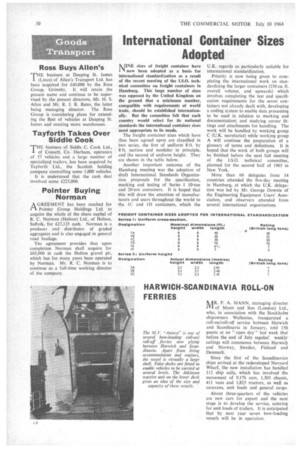International Container Sizes Adopted
Page 32

If you've noticed an error in this article please click here to report it so we can fix it.
MINE sizes of freight container have 111 now been adopted as a basis for international standardization as a result of the recent meeting of the I.S.O. technical committee on freight containers in Hamburg. This large number of sizes was opposed by the United Kingdom on the ground that a minimum number, compatible with requirements of world trade, should be established internationally. But the committee felt that each country would select for its national standards the international container sizes most appropriate to its needs.
The freight container sizes which have thus been agreed upon are classified in two series, the first of uniform 8 ft. by 8 ft. section and modular in principle, and the second of uniform height. They are shown in the table below, Another important outcome of the Hamburg meeting was the adoption of draft International Standards Organization proposals for the specification, marking and testing of Series 1 10-ton and 20-ton containers. It is hoped that this will draw the attention of manufacturers and users throughout the world to the IC and ID containers, which the U.K. regards as particularly suitable for international standardization.
Priority is now being given to completing the international work on standardizing the larger containers (250 Cu. ft. overall volume, and upwards) which involves completing the test and specification requirements for the seven containers not already dealt with, developing a coding system to enable data processing to be used in relation to marking and documentation; and studying corner fittings and attachments for handling. The work will be handled by working group C (U.K. secretariat) while working group A will continue the preparation of a glossary of terms and definitions. It is hoped that the work of both groups will be finished before the next full meeting of the I.S.O. technical committee, planned for the second half of 1965 in New York.
More than 60 delegates from 14 countries attended the five-day meeting in Hamburg, at which the U.K. delegation was led by Mr. George Downie of the Engineering Equipment Users' Association, and observers attended from several international organizations.
























































































































